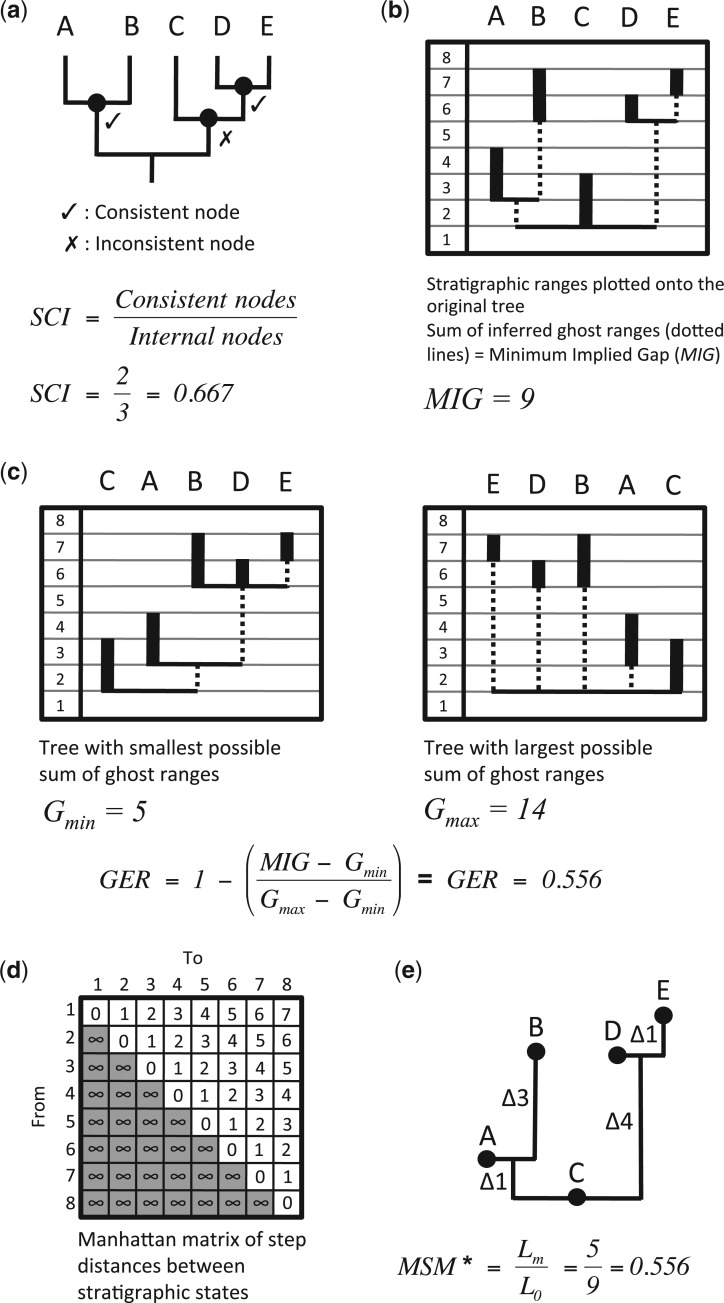Figure 1.
Calculation of stratigraphic indices. a) Cladogram for five taxa (A–E) with internal nodes marked as black circles. b) Observed stratigraphic ranges for taxa A–E indicated as vertical black bars through stratigraphic intervals 1–8. Cladistically implied ghost ranges (using the tree from a) are indicated by dotted lines, and the sum of the lengths of these ghost ranges (in number of intervals) gives the minimum implied gap (MIG). (a and b) The SCI is given simply as the fraction of internal cladogram nodes that have sister nodes or terminals as old or older. c) Calculating the GER. The MIG is the MIG (sum of cladistically implied ghost ranges) observed on the actual tree (see panel “b”), and and are the sums of ghost ranges for the best and worst fits of the given set of stratigraphic ranges onto any tree topology. The expresses the sum of ghost ranges in terms of numbers of stratigraphic intervals of unit length, whereas the MIG is a more general term that may scale in unit intervals or in millions of years. Note that and . d) Manhattan stratigraphic matrix of the step distances between stratigraphic states 1–8 (equivalent to an irreversible, Sankoff character). e) States from “b” and “d” optimized onto the tree in “a”, with branch length distances marked. The modified MSM (MSM*) is given by , where is the minimum possible length of the irreversible age character (equivalent to the steps implied between the oldest and youngest intervals; here five steps), and is the observed length of the age character (here nine steps). The values of GER and MSM* are coincidentally the same (0.556) in this example.

